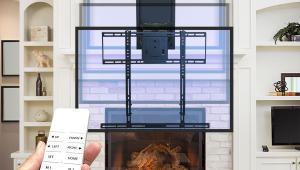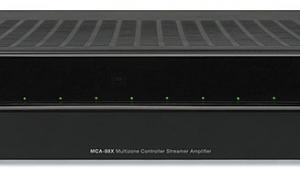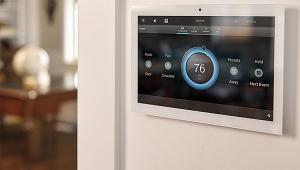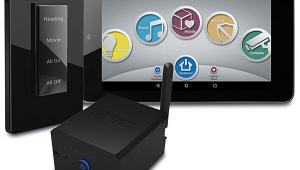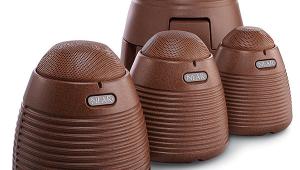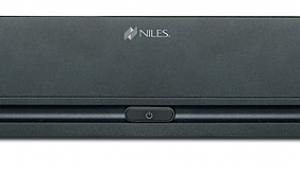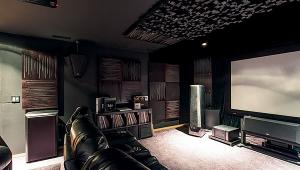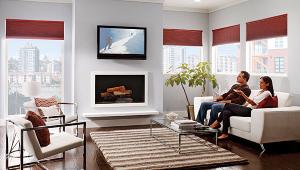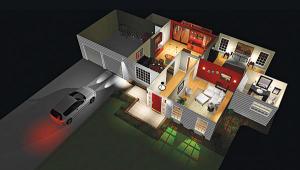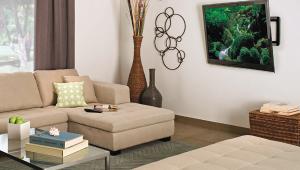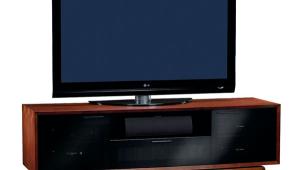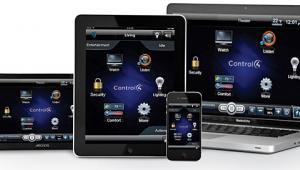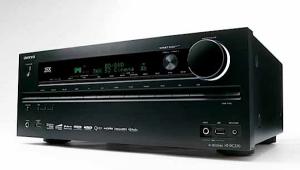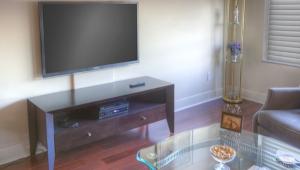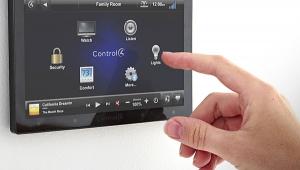I Want That!

Stretching out on the comfortable, wood-trimmed, beige sofa in the hearth room of the Woodland Hall house, it's hard not to get a glimmer of what omnipotence feels like. A few deft touches on a life|point 12.1-inch touchscreen controller transport you throughout this 12,000-square-foot contemporary home in the Columbus, Ohio, suburb of Westerville. The HP 50-inch plasma in the imposing walnut armoire is one of 15 displays throughout the year-old home that can monitor any of the residence's 36 audio zones, 120 DSC Maxsys security zones with 22 cameras, 19 distinct HVAC climates, and 295 Insteon and Vantage lighting zones. After a few minutes of virtually roaming and commanding the architectural equivalent of the USS Enterprise, you could be forgiven for thinking, "What, there are only three Xbox 360s?"
The house is home to Seale Moorer, one of the information revolution's savvier tech execs. In the heady 1990s silicon boom, he cofounded USI, the company that pioneered the integration of touchscreen technology into the enterprise-scale point-of-sale retail market. More recently, Moorer founded Exceptional Innovation (EI), a company that uses the Woodland Hall house (regardless of whether he's in it) as the ultimate example of what the connected house can be.

Moorer wasn't around on the day I visited, but an electronic butler was—an onscreen primer that gets you up to speed on the life|ware system pretty quickly. Leaving the hearth room behind (with the gas fireplace up around 60 percent), the master bedroom's CLO X-Arm robotic video mount is preset for prone and sitting positions on the bed; you can toggle between them using the preset macros, called life|scenes. Using the life|ware system is easy but still requires professional programming at this stage. Or you can make fine adjustments to it as needed, all from the remote.
Video follows you into the 400-square-foot master bath with one of the system's more unique components, an 8.9-inch touchscreen that can recall and play pictures for up to four channels simultaneously. One touch on any of the four images brings up that channel's audio through the touchscreen's onboard speaker; a second touch brings the image full screen and routes audio through the Klipsch in-ceiling speakers. EI developed this approach based on market research that confirms what we all secretly acknowledge: A video remote is not something we normally keep in the powder room.

You have to look for the speakers, which blend into the interior faux paint finishes. The life|ware system's only real footprints in the house are the ubiquitous touchscreens.
The HP z558 music-library system has room for 6,000 tracks, and the screens will recall them based on any number of field configurations, with an intuitive assist in the form of the album-cover artwork. The digitized images are supplied as part of a deal with enthusiast Website www.allmusic.com. You can recall tracks from any of the 36 audio-control locations in the house for playback at that location.
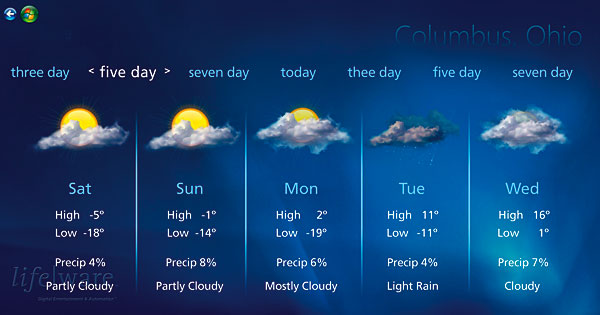
Personal Touch
Personalization is a buzzword of the era, and life|ware addresses it. Each of the five guest bedrooms has its own access to video, music, and room automation, including remotely activated blinds and video-mount swing arms. "Indulge," my (human) house guide encourages. "Each room can be its own experience without affecting the rest of the house."
That includes the home theater on the lower level of the home. It has the insulation it needs to keep the power of the Klipsch THX Ultra2 speaker system (six surrounds, two center channels, and two subs), driven by an Integra DTR-10.5 receiver, from acoustically overflowing. The SIM2 three-chip DLP projector illuminates the Vutec Vision X Silverstar 120-inch screen with video from the Sony Media Center DVD changer.

Bring up Windows Media Center or Windows' new Vista operating system, and you can see how life|ware creates a pivot for the future of home automation. The Woodland Hall home has 18 Windows Media Centers, including a half-dozen extenders. life|ware has its own controller, but the system design is highly Windows friendly. However, the home is more than another glossy candidate for Lifestyles of the Rich and Famous. Just over a nearby row of trees is another house slightly less than half the size of Moorer's that suggests how the same synergy of the Media Center and life|ware protocol can bring high-end automation to the masses.
Closer to Home
Mike Seamons' house is also contemporary, with a neat yet lived-in look that suggests that order can coexist with five kids on the loose. Seamons, EI's vice president of marketing, used to own Custom Home Control, a home theater and home-automation integration company in California, which counted Moorer among its clientele. Seamons' 5,500-square-foot home is also more technologically modest. He has eight video screens, counting a couple of relatively quaint CRTs in the master bedroom and basement gym, two thermostatic zones, and eight lighting/security zones with two cameras. One wrinkle that bespeaks not so much affluence as imagination is a 42-inch plasma mounted in the laundry room that can flip on its gimbaled mount to face out the window onto the deck, transforming itself from soap-opera central to Monday Night Football in an instant.

That intimacy with technology suggests how life|ware aims to transform home automation by broadening its accessibility and affordability. While EI has emphasized life|ware's cost-effectiveness from the beginning, they nonetheless used the high end of the home-automation market as their reference point. But it's the user interface of the Windows Media Center as the home-entertainment controller that reveals life|ware 's strategy of letting it ride into millions of homes inside that familiar electronic Trojan horse.
"The thing about a system like the Media Center on life|ware is that everything runs independently on a mesh-type network," Seamons says. "No one component can crash the house."
Seamons hesitates a little when asked about how life|ware might open up home automation to a mass market. But it's also clear that the notion excites someone who thinks these technologies should be able to be part of any home. "I would say, by the end of 2007, there will be starter kits—the building blocks like the Media Center, a high-definition television, and a hi-fi audio system—that do-it-yourselfers can access," he says. "A lot of those components are already there. life|ware is going to fit right in between them."
Seamons' home has life|ware -friendly elements, including Insteon lighting controls, Russound audio components, RCS thermostats, and a Universal Remote MX-850 controller that works all over the house. (As of the beginning of this year, 145 products from 35 manufacturers are life|ware enabled.) A single Media Center feeds signals to the master bedroom, the connected laundry room, and the home theater. Pausing in one room, Seamons can take the same remote and pick up a video or a song where he left off in another area of the house.
Seamons' home is slightly less than half the size of the Woodland Hall house, but, at about $50,000, its automation and entertainment aspect is one-tenth that of the larger dwelling, which suggests how the future will be scaled. The former integrator did a lot of the installation work himself, but he says that, once a life|ware system is online in a home, you can reconfigure or expand it pretty easily. To underscore the point, Seamons pulls out a Phillips-head screwdriver and changes out an Insteon light switch in his basement near the home theater. "Once your network is up and running, everything after that is very simple," he says.
Life Lingo
Like Starbucks and other brands that harbor aspirations of world domination, life|ware has its own argot.
- life|link: Serial control support for legacy components to make them life|ware enabled
- life|point: Touchscreen interfaces
- life|vision: Transforms and integrates broadcast video into IPTV (not a DVR, per se, but has a one-hour recording buffer)
- life|storage: Dual-core Pentium-based server with up to 2 terabytes of storage
- life|support: Tech support with remote diagnostic capability available on a 24/7 basis at a cost of 9 to 1,222 percent of the retail value of the system per annum.
www.life-ware.com
- Log in or register to post comments
